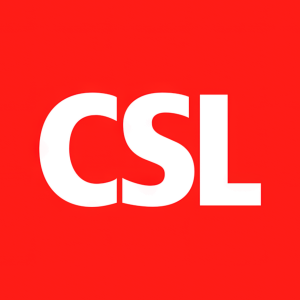New Seqirus Data Published in Vaccines Highlight Effectiveness and Economic Benefit of Cell-Based Quadrivalent Seasonal Influenza Vaccine (QIVc) in the 2018/19 U.S. Influenza Season
Rhea-AI Summary
Seqirus has published new research in Vaccines showing that its cell-based quadrivalent influenza vaccine (QIVc) significantly reduced hospitalizations and emergency room visits compared to egg-based vaccines (QIVe) during the 2018/19 U.S. influenza season. Analysis indicated annual savings of $461 per vaccinated individual with QIVc. More than 20 million doses of QIVc were administered in the U.S., highlighting its public health impact. The study supports QIVc's effectiveness, especially against respiratory complications, while indicating potential cost benefits for healthcare systems.
Positive
- QIVc showed a 6.5% reduction in influenza-related hospitalizations and ER visits compared to QIVe.
- Economic analysis revealed an annualized saving of $461 per patient vaccinated with QIVc.
- Over 20 million doses of QIVc were administered in the U.S., indicating its widespread use and potential public health benefit.
Negative
- None.
Insights
Analyzing...
SUMMIT, N.J., March 25, 2021 /PRNewswire/ -- Seqirus, a global leader in influenza prevention, today announced the publication of new real-world evidence (RWE) on the company's cell-based quadrivalent seasonal influenza vaccine (QIVc) in peer-reviewed medical journal Vaccines.1 This retrospective cohort analysis indicated QIVc was more effective in reducing hospitalizations/emergency room (ER) visits caused by influenza, respiratory related hospitalizations/ER visits and all-cause hospitalizations compared with an egg-based quadrivalent influenza vaccine (QIVe) among individuals 4–64 years of age during the 2018/19 U.S. influenza season.1
In an economic analysis, the study also found that QIVc was associated with significantly lower annualized all-cause total costs ((
"Real world studies of influenza vaccines provide critical evidence for understanding the impact of annual immunization linked to the circulating viruses in the community," said Stephen I. Pelton, MD, Professor of Pediatrics at Boston University School of Medicine and Public Health & Boston Medical Center, and study author. "Current studies demonstrate that QIVc provides significantly higher effectiveness, compared with standard dose egg-based quadrivalent influenza vaccine, in preventing all-cause hospitalizations and hospitalizations/ER visits related to any respiratory events including pneumonia and asthma/COPD/bronchial events. Also evident is the potential costs saving from QIVc resulting from its greater comparative effectiveness."
The Centers for Disease Control and Prevention (CDC) recommends everyone six months and older without contraindications receive an annual influenza vaccine as the best way to prevent seasonal influenza.3 Influenza vaccination can reduce illness from influenza, doctors' visits, missed work and school, as well as reduce flu-related hospitalizations and deaths.4 While the burden of influenza varies each year, the CDC estimates that annually influenza has resulted in between 9 to 45 million illnesses, 140,000 to 810,000 hospitalizations and 12,000 to 61,000 deaths in the U.S. between 2010-2020.5
This study, published in Vaccines, adds to recent research, including a study published in Clinical Infectious Diseases demonstrating that QIVc prevented significantly more influenza-related medical encounters among individuals 4 years and older, compared to QIVe during the 2018/19 U.S. influenza season.6 This growing body of evidence indicates that cell-based vaccines like QIVc may potentially result in better influenza-related outcomes compared to standard vaccine options.
"Influenza vaccination remains a critical public health tool during the ongoing COVID-19 pandemic, helping to not only reduce the risk of seasonal influenza but also decrease the burden of influenza on healthcare resources. Given the possibility of a resurgence of the influenza virus, it is still important to help protect yourself and those around you from influenza by getting an influenza vaccine," said Gregg Sylvester, MD, Chief Medical Officer at Seqirus.
QIVc utilizes a cell-based influenza vaccine manufacturing process, an alternative to traditional egg-based manufacturing.7 There are several factors that can impact seasonal influenza vaccine effectiveness, which may include mismatch between circulating strains and the influenza strains contained within the seasonal influenza vaccine.7 Egg-based manufacturing requires a growth-inducing strain to ensure the influenza virus can grow successfully in eggs, which can cause the strain to mutate and result in an influenza virus that can be different from the intended strain.7 This may lead to a mismatch between the circulating strains and the inactivated influenza strains contained within the seasonal influenza vaccine.7
Cell-based influenza vaccines like QIVc are designed to help avoid egg-adapted changes and may result in vaccine virus strains that are more closely matched to those selected by the World Health Organization.7,8 Cell-based influenza vaccine technology may offer additional advantages over the standard influenza manufacturing process, including being more scalable and offering faster production in the event of an influenza pandemic.7
In the U.S., Seqirus operates a state-of-the-art cell-based manufacturing facility in Holly Springs, North Carolina, purpose-built in partnership with the Biomedical Advanced Research and Development Authority (BARDA) to increase cell-based vaccine manufacturing capacity and combat pandemic influenza threats.9 Seqirus recently announced plans to build a new, world-class cell-based manufacturing facility in Australia, which will be the only cell-based influenza vaccine manufacturing facility in the Southern Hemisphere.10
About the Study
This retrospective cohort analysis compared the relative vaccine effectiveness (rVE) of QIVc to QIVe in the reduction of influenza and respiratory-related hospitalizations/ER visits and all-cause hospitalizations as assessed by estimated rVE, among subjects 4-64 years old during the 2018/19 influenza season in the U.S.1 This analysis also assessed economic outcomes including, annualized all-cause total costs, outpatient medical costs and inpatient hospitalization costs for QIVc versus QIVe for the overall cohort.1
The study sample comprised 669,030 QIVc recipients and 3,062,797 QIVe recipients.1 The study analyzed administrative claims data in the U.S. (IQVIA PharMetrics® Plus, IQVIA, USA).1 Results indicate that, after adjustment for confounders, QIVc was significantly more effective in reducing influenza-related hospitalizations/ER visits (
The economic outcomes were assessed only for the overall cohort, subjects 4-64 years old and included 665,042 QIVc recipients matched to 665,042 QIVe recipients using propensity score matching (PSM) methods.1 To reduce bias due to residual confounding, generalized estimating equation models (GEEs) were used following PSM adjustments.1 QIVe was associated with significantly higher (+
This study was subject to the typical limitations associated with retrospective cohort analysis. A potential limitation of this study is that cohort matching methods used did not necessarily adjust for imbalance in potential unmeasured confounders.1 Nonetheless, there were no differences between study cohorts in the negative control outcome of UTI hospitalizations/ER visits after inverse probability of treatment weighting (IPTW) adjustments, suggesting that IPTW created comparable cohorts.1 Additionally, the administrative claims data do not provide clinical details, as they are primarily collected for the purposes of payment.1 Therefore, there is a potential for miscoding or misclassification.1 This study relied on ICD-9 and ICD-10 codes for lab-confirmed influenza, perhaps introducing outcome misclassification.1 Finally, these findings may not be generalizable to the uninsured, Medicare, or Medicaid populations, as the study sample comprised individuals who were largely commercially or self-insured.1
About Seasonal Influenza
Influenza is a common, contagious seasonal respiratory disease that may cause severe illness and life- threatening complications in some people.11 Influenza can lead to clinical symptoms varying from mild to moderate respiratory illness to severe complications, hospitalization and in some cases, death.11 The CDC recommends annual vaccination for individuals aged 6 months and older, who do not have any contraindications.11 Because transmission of influenza viruses to others may occur one day before symptoms develop and up to 5 to 7 days after becoming sick, the disease can be easily transmitted to others.11 Preliminary estimates from the CDC report that from October 1, 2019, through April 4, 2020, there were an estimated 410,000 to 740,000 influenza-related hospitalizations in the U.S.12 Since it takes about two weeks after vaccination for antibodies to develop in the body that help protect against influenza virus infection, it is recommended that people get vaccinated before influenza begins spreading in their community.4 The CDC recommends that people get vaccinated by the end of October.4 Getting vaccinated too early (for example in July or August), can be associated with reduced protection against influenza infection later in the flu season.4 However, getting vaccinated later can still be beneficial and vaccination should continue to be offered throughout the influenza season, even into January or later.4
About Seqirus
Seqirus is part of CSL Limited (ASX: CSL). As one of the largest influenza vaccine providers in the world, Seqirus is a major contributor to the prevention of influenza globally and a transcontinental partner in pandemic preparedness. With state-of-the-art production facilities in the U.S., the U.K. and Australia, and leading R&D capabilities, Seqirus utilizes egg, cell and adjuvant technologies to offer a broad portfolio of differentiated influenza vaccines in more than 20 countries around the world.
About CSL
CSL (ASX:CSL) is a leading global biotechnology company with a dynamic portfolio of life-saving medicines, including those that treat hemophilia and immune deficiencies, as well as vaccines to prevent influenza. Since our start in 1916, we have been driven by our promise to save lives using the latest technologies. Today, CSL — including our two businesses, CSL Behring and Seqirus - provides life- saving products to more than 100 countries and employs more than 27,000 people. Our unique combination of commercial strength, R&D focus and operational excellence enables us to identify, develop and deliver innovations so our patients can live life to the fullest. For more information about CSL Limited, visit www.csl.com.
For more information visit www.seqirus.com and www.csl.com.
Intended Audience
This press release is issued from Seqirus USA Inc. in Summit, New Jersey, USA and is intended to provide information about our global business. Please be aware that information relating to the approval status and labels of approved Seqirus products may vary from country to country. Please consult your local regulatory authority on the approval status of Seqirus products.
Forward-Looking Statements
This press release may contain forward-looking statements, including statements regarding future results, performance or achievements. These statements involve known and unknown risks, uncertainties and other factors which may cause our actual results, performance or achievements to be materially different from any future results, performances or achievements expressed or implied by the forward-looking statements. These statements reflect our current views with respect to future events and are based on assumptions and subject to risks and uncertainties. Given these uncertainties, you should not place undue reliance on these forward-looking statements.
FLUCELVAX® QUADRIVALENT (Influenza Vaccine) IMPORTANT SAFETY INFORMATION
INDICATION AND USAGE
FLUCELVAX QUADRIVALENT is an inactivated vaccine indicated for active immunization for the prevention of influenza disease caused by influenza virus subtypes A and type B contained in the vaccine.
FLUCELVAX QUADRIVALENT is approved for use in persons 2 years of age and older.
CONTRAINDICATIONS
Do not administer FLUCELVAX QUADRIVALENT to anyone with a history of severe allergic reaction (e.g. anaphylaxis) to any component of the vaccine.
WARNINGS AND PRECAUTIONS
If Guillain-Barré syndrome has occurred within 6 weeks of receipt of a prior influenza vaccine, the decision to give FLUCELVAX QUADRIVALENT should be based on careful consideration of the potential benefits and risks.
Appropriate medical treatment and supervision must be available to manage possible anaphylactic reactions following administration of the vaccine.
Syncope (fainting) can occur in association with administration of injectable vaccines, including FLUCELVAX QUADRIVALENT. Procedures should be in place to avoid falling injury and to restore cerebral perfusion following syncope by maintaining a supine or Trendelenburg position.
After vaccination with FLUCELVAX QUADRIVALENT, immunocompromised individuals, including those receiving immunosuppressive therapy, may have a reduced immune response.
Vaccination with FLUCELVAX QUADRIVALENT may not protect all vaccine recipients against influenza disease.
ADVERSE REACTIONS
The most common (≥
The most common (≥
The most common (≥
The most common (≥
The most common (≥
The most common (≥
To report SUSPECTED ADVERSE REACTIONS, contact Seqirus at 1-855-358-8966 or VAERS at 1-800-822- 7967 or www.vaers.hhs.gov.
Before administration, please see the full US Prescribing Information for FLUCELVAX QUADRIVALENT.
FLUCELVAX® QUADRIVALENT is a registered trademark of Seqirus UK Limited or its affiliates.
USA-QIVc-21-0011
MEDIA CONTACT
Polina Miklush
+1 (908) 608-7170
Polina.Miklush@Seqirus.com
REFERENCES
1 Krishnarajah, G., Divino, V., Postma, M., et al. (2021). Clinical and Economic Outcomes Associated with Cell-Based Quadrivalent Influenza Vaccine vs. Standard-Dose Egg-Based Quadrivalent Influenza Vaccines during the 2018–19 Influenza Season in the United States. Vaccines.
2 Data on file. (2020). Seqirus USA Inc.
3 Centers for Disease Control and Prevention (CDC). (2020). Key Facts About Seasonal Flu Vaccine. Retrieved from: https://www.cdc.gov/flu/prevent/keyfacts.htm. Accessed February 2021.
4 CDC. (2020). Who Needs a Flu Vaccine and When. Retrieved from: https://www.cdc.gov/flu/prevent/vaccinations.htm. Accessed February 2021.
5 CDC. (2020). Disease Burden of Influenza. Retrieved from: https://www.cdc.gov/flu/about/burden/index.html#:~:text=While%20the%20impact%20of%20flu,
6 Boikos, C., Fischer, L., O'Brien, D., et al. (2021). Relative Effectiveness of the Cell-derived Inactivated Quadrivalent Influenza Vaccine Versus Egg-derived Inactivated Quadrivalent Influenza Vaccines in Preventing Influenza-related Medical Encounters During the 2018–2019 Influenza Season in the United States. Clinical Infectious Diseases.
7 CDC. (2020). Cell-Based Flu Vaccines. Retrieved from: https://www.cdc.gov/flu/prevent/cell-based.htm. Accessed February 2021.
8 Rajaram, S., Boikos, C., Gelone, et al. (2020). Influenza Vaccines: The Potential Benefits of Cell-Culture Isolation and Manufacturing.
9 This project has been funded in whole or in part with Federal funds from the Office of the Assistant Secretary for Preparedness and Response, Biomedical Advanced Research and Development Authority, under contract numbers HHSO10020060001F2C, HHSO100200700030C, HHSO100200900101C and HHSO100201200003I.
10 Data on file. (2020). Seqirus USA Inc.
11 CDC. (2019). Key Facts about Influenza (Flu). Retrieved from: https://www.cdc.gov/flu/about/keyfacts.htm Accessed February 2021.
12 CDC. (2020). 2019-2020 U.S. Flu season: Preliminary burden estimates. Retrieved from: https://www.cdc.gov/flu/about/burden/preliminary-in-season-estimates.htm Accessed February 2021.
SOURCE Seqirus






